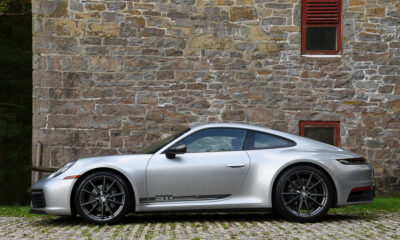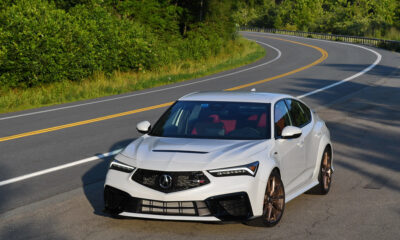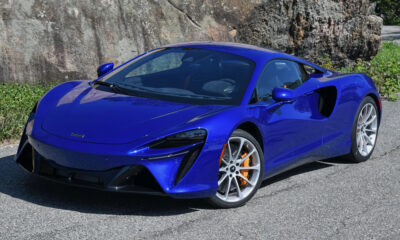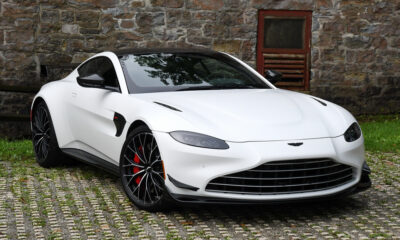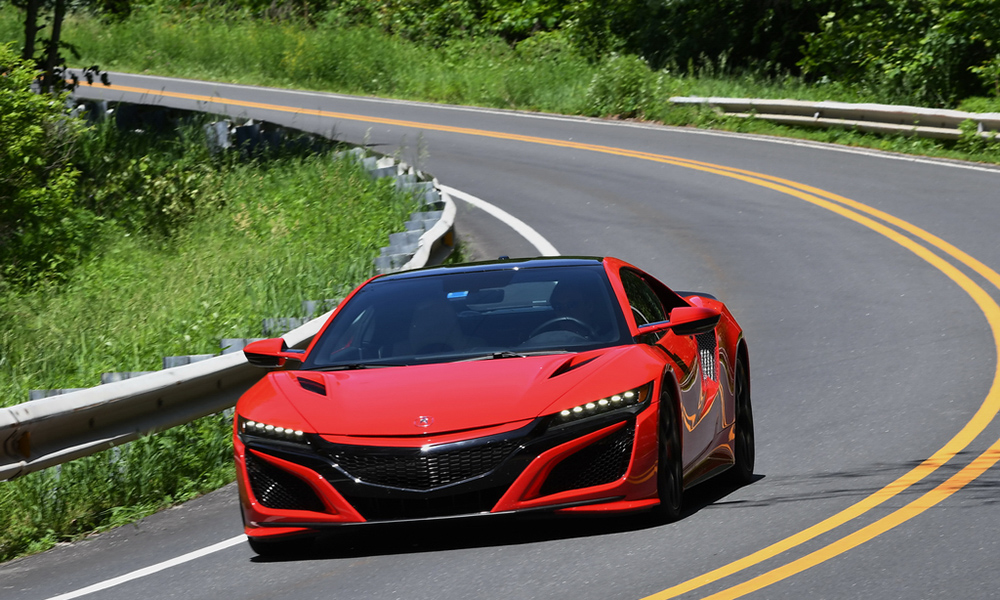
Photo: David Haueter
The original Acura NSX made waves in the exotic car market when it was introduced over 25 years ago.
Going against the notion that discomfort and unreliability were annoyances that you had to put up with to enjoy world-class performance, the first NSX had the looks and performance to match traditional exotics but was comfortable, reliable and easy to live with. It forced manufacturers like Ferrari to up their game after years of living off their reputation.
That first NSX was sold for 15 years and another 11 years would pass before the latest NSX came out in 2016.
The second-generation NSX holds to the same formula as the original with a mid-engine layout, cutting edge technology, stunning design and everyday reliability, but is backed up by a GT3 racing version that is closely tied to the road car.
It’s also the most exotic car built in the United States, as the current NSX was designed, engineered and developed at the Performance Manufacturing Center in Marysville, Ohio, where a surprisingly high amount of NSX assembly is done by human hands. NSX GT3 race cars are made alongside the road cars in the same plant.
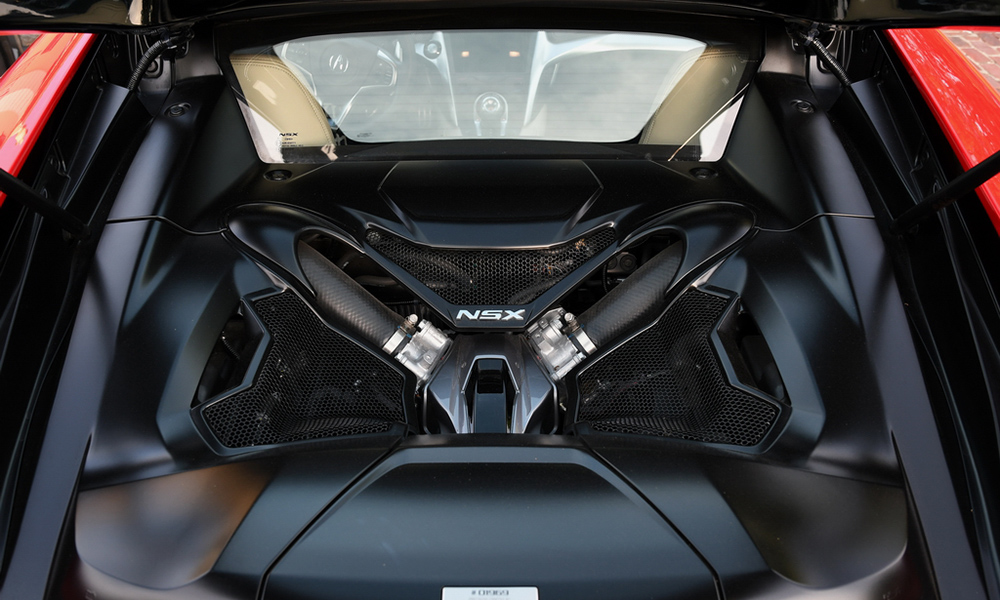
Photo: David Haueter
The NSX is packed with some interesting technology. It’s a hybrid, with most of the power coming from a twin-turbocharged mid-mounted V6, supplemented by two electric motors that drive the left and right front wheels and make it all-wheel drive.
Those motors also assist in acceleration, braking and even handling, and use the energy generated under braking to recharge the battery.
There’s no plug-in option with this hybrid – the car does it all on its own. Together, the three motors generate 573hp and 476 lb-ft of torque and can get the NSX from 0-60mph in less than three seconds.
Besides the motors, there’s a lot of other racy technology in the NSX. The power is transmitted through a 9-speed dual-clutch transmission, there’s a limited-slip differential with a wet multi-plate clutch, and extensive use of aluminum and carbon fiber in the construction. Brakes are vented discs with Brembo aluminum mono-block calipers.
Weight is 3,878 pounds with bias toward the rear with a 42 percent/58 percent weight distribution, which is one the high side compared to cars like the Ferrari 488 and Porsche 911 GT3, but the weight is managed well with a low center of gravity and much of the mass toward the middle of the car.
The front and rear suspension are mounted directly to the space frame, with a double-wishbone setup in the front with double lower control arms, and a multi-link setup at the rear. The rubber meets the road through Continental SportContact6 tires.
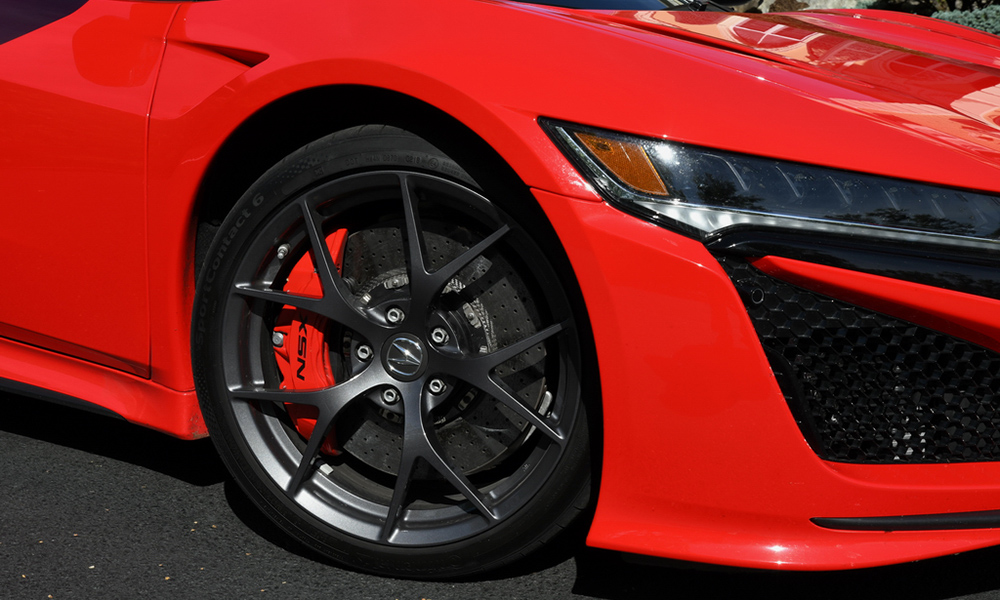
Photo: David Haueter
Acura made some notable improvements to the NSX for 2019, with stabilizer bars that are 26 percent stiffer at the front and 19 percent stiffer at the rear, 21 percent stiffer rear toe link bushings and rear hub rigidity increased by 6 percent, along with more refined software tuning for the AWD, electric power steering and adaptive suspension.
Those changes, along with the Continental tires that are new for 2019, result in a 2-second improvement in lap times at the Suzuka race track in Japan.
I had a chance to drive the NSX for a week and it was a real thrill. I love the way the car looks, with its chiseled sides, aggressive front air intakes and low stance.
It certainly looks the part of an exotic supercar, and I wasn’t surprised to find that some people I came across while I was driving it thought it was a Ferrari.
Inside, the NSX cockpit is a nice blend of leather, alcantara and metal trim, and there was enough room for my 6’5” frame to drive comfortably.
The tach is front and center through the steering wheel with the speedometer inside of the same display, and is flanked by information on fuel, oil temp and electric motor charge status. The driver can also scroll through a lot of information on the center display, including fuel range and tire pressures.
In true supercar form, the NSX sits low to the ground, with the road right out in front of you which is framed nicely by the bulges from the tops of the fenders.
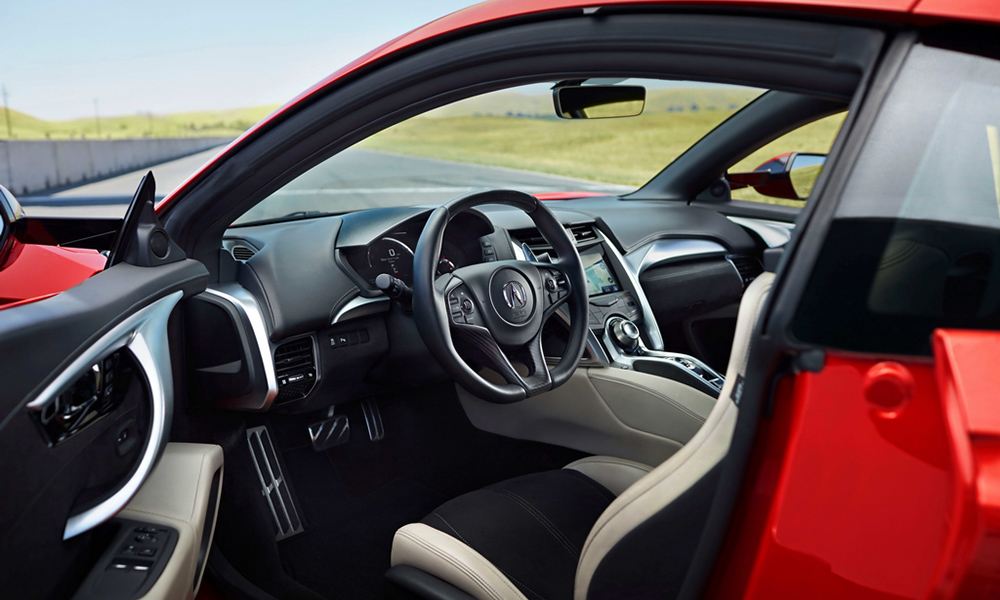
Photo: Acura
There’s good visibility through the front windshield and you feel intimately in touch with the road when you drive it. The seats are also very supportive for performance driving, but it’s kind of odd that there’s no lower back support for the passenger seat in a car this expensive.
Shift paddles are attached to the steering wheel, and the buttons for gear selection seemed odd at first but are very easy to use. This car is made for driving, so there’s not much in the way of storage in the cockpit, but there is a surprising amount of space in the small trunk since the storage area extends to the edges of the body.
The NSX drives as good as it looks. There’s a boost of torque right off the line from the electric motors before the turbocharged V6 really kicks in, and it feels blisteringly fast when you’re really on it.
It does lack some of the aural symphony of the motor that you get with a car like a Ferrari or Lamborghini, but it sounds incredible when you get the revs above 5,000rpm.
With modes for Quiet (which relies more heavily on the electric motors), Sport, Sport+ and Track mode, the NSX can go from being docile car that you can drive every day to a track day weapon.
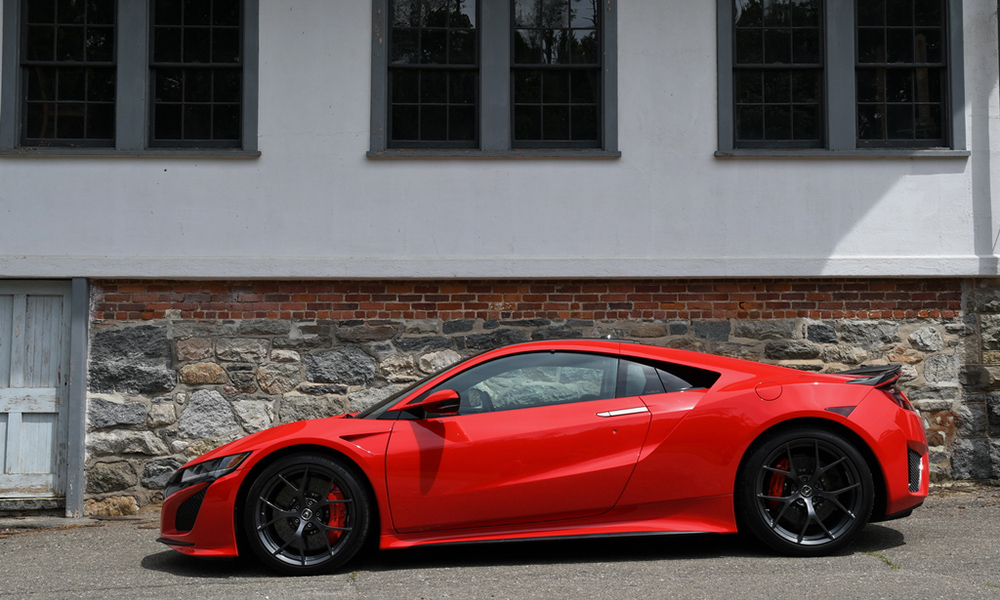
Photo: David Haueter
I didn’t get a chance to take the NSX to the track, but I did spend a lot of time on a sparsely traveled road in rural New Jersey that I use for testing, which features a lot of elevation changes and everything from ultra-fast to slow corners, and it was newly paved before my loan.
The NSX was fantastic on this road in Track and Sport+ mode, with a great blend of balance and power, with great communication through the seat and steering wheel. Gear changes while shifting manually with the paddles were race-car fast, and the braking feel was nice and progressive, even when coming down from close to triple-digit speeds.
The NSX also has a racing pedigree, which has been advanced significantly this year with Meyer Shank Racing and the driving duo of Trent Hindman and Mario Farnbacher.
They were leading GTD class points after the Canadian Tire Motorsport Park race with a win at Watkins Glen, second place finishes at Mid-Ohio and CTMP and a fourth at Daytona.
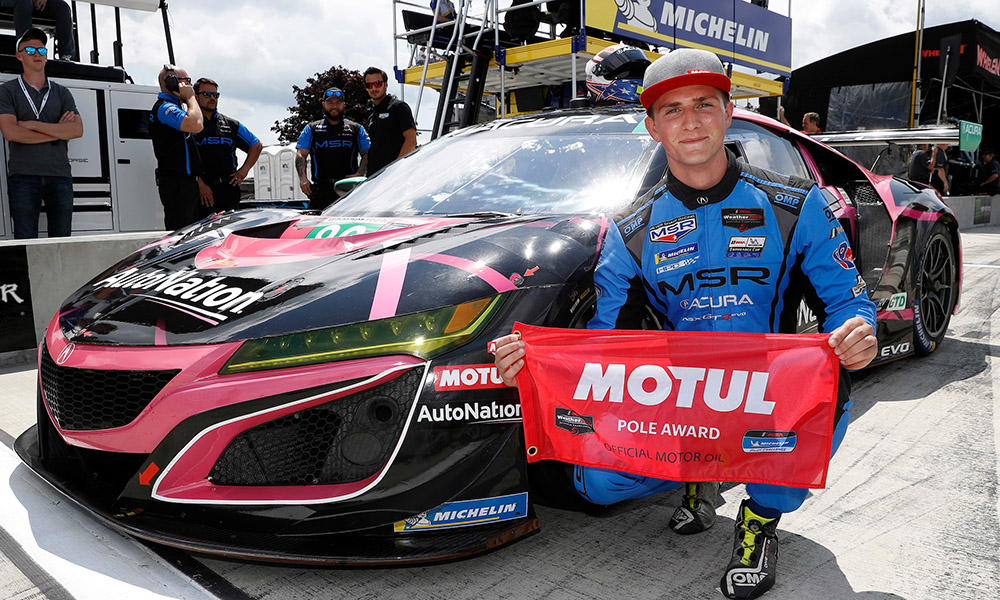
Photo: Mike Levitt/IMSA
Hindman has been a star in the car this year, with pole positions at Sebring and Watkins Glen, and has been impressed with the abilities of the NSX GT3.
“I had a chance to drive a couple different GT3 cars before the NSX, including the AMG GT, the Audi R8 and the Lamborghini Huracán,” he says. “Nothing against those cars, but it was pretty immediate when I got into the NSX that it suited my driving style.
“The biggest thing for me is the way it decelerates and changes direction. I had not driven a GT car that can brake as late as the NSX can.
“It’s absurd what Acura have done to get this thing to stop as fast as it does. It’s unreal. You can also carry an incredible amount of entry speed into a corner. It’s awesome and it makes our job very exciting as drivers. You think you’re at the limit and you keep peeling your foot off the brake earlier and earlier and the car just keeps sticking.”
A person who doesn’t know any better made a comment while I had the NSX that it’s the same company that builds lawn mowers. I responded that it’s also from the same company that builds Indy Car and Formula 1 motors and is racing this car in IMSA.
Perhaps that Acura name is keeping it from selling better when supercar buyers want a famous badge on the hood, but it’s a shame if that’s the case.
The NSX is a fantastic and exciting car to drive, and it makes you feel better every time you drive it. At a base price of $157,700, it’s also a relative bargain in the exotic supercar world, even if it is made in Ohio.
For more information visit www.acura.com.
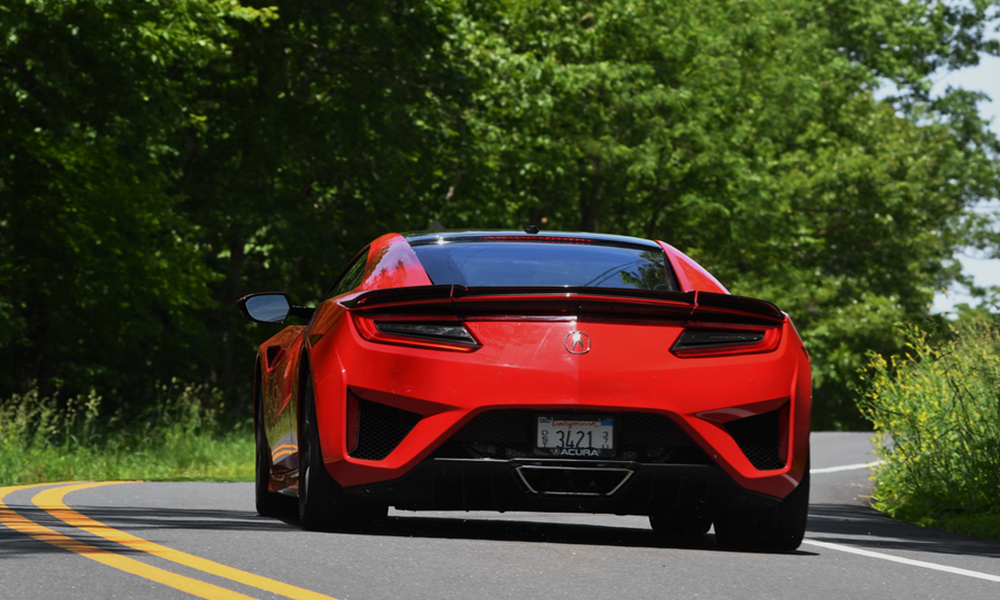
Photo: David Haueter


















